Drum Roll for the Woodpecker, One of the UK’s Best Loved Birds
One of the most intriguing and evocative sounds in British woodlands is the Woodpecker tapping on tree trunks. This wonderful sounds, which is actually called drumming, is characteristic of the Great Spotted Woodpecker, which is the most common woodpecker in the UK.
But is the UK home to any other varieties of Woodpecker and if so, do they drum?
In this article, we take a closer look at one of Britain’s best loved and most iconic birds and unveil the secrets of their unique behaviour.
UK species of Woodpecker
Although the Great Spotted Woodpecker, also known as the Pied Woodpecker, is the most common UK species of Woodpecker, there are two other species that can been seen on these shores.
These are the Green Woodpecker and the Lesser Spotted Woodpecker.
They each share a similar silhouette, but differ significantly in size and the colour of their plumage.
Great Spotted Woodpecker
If you hear drumming in a wood, the chances are it is being done by the Great Spotted Woodpecker. It has a loud, distinct drum and amazingly, can achieve speeds of 40 drums per second, although more relaxed speeds of 10 – 15 times per seconds are more usual.
The drumming can be heard up for half a mile away.
Despite its name, the Great Spotted Woodpecker is not the largest species of Woodpecker in the UK. In fact, it is considerably smaller than the Green Woodpecker, measuring around 22cm from its crown to the end of its tail.
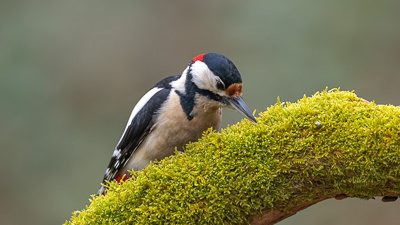
It is a distinctive black and white in colour, with white shoulder stripes and red under its tale. Males also have a red patch on the back of their heads which distinguishes it from the female.
There are around 140,000 breeding pairs of Great Spotted Woodpeckers in the UK, and they are a relatively common site in back gardens and on bird feeders.
Great Spotted Woodpeckers are omnivores and have a varied diet, ranging from nuts and pinecones to insects, and like Blackbirds, they are known to use stones as anvils to break open nut shells.
One thing that is less well-known about Great Spotted Woodpeckers though, is that they also like to eat the chicks of other species of bird and are thought to be partly responsible for the decline in the Willow Tit. They have also been known to raid House Martin colonies, destroying the nests as they go.
Green Woodpecker
As already mentioned, the Green Woodpecker is the largest species of Woodpecker in the UK, standing more than a foot in height. Some people say it looks like a Parrot with its bright green features and red cap. It’s wings are dark green and its breast is paler. It’s yellow rump can be seen in flight.
Males can be distinguished from females by a red streak below their cheeks.
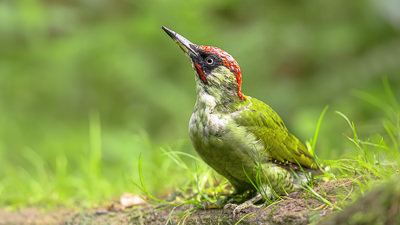
The Green Woodpecker’s behaviour differs from the Great Spotted Woodpecker in a number of ways. For a start it rarely drums, and when it does it’s a bit lacklustre. Also, the Green Woodpecker spends much of its time feeding on ants on the ground rather in trees. In fact, its entire diet consists of ants and it likes nothing more dipping its long tongue into a colony.
The Green Woodpecker has a distinctive call which is sometimes described as ‘yaffle’. Many think it sounds like a crazy laugh and is one of the best ways to identify the bird.
Currently, there are around 52,000 breeding pairs of Green Woodpeckers in the UK and this is about double the number there were in the 1970s, making the bird one of the few success stories of recent years.
Lesser Spotted Woodpecker
As well as being the smallest of the three species of UK Woodpecker (standing just 15cm tall – about the same as a Sparrow) it is also the rarest. Currently, there are only around 1,000-2,000 breeding pairs in England and Wales.
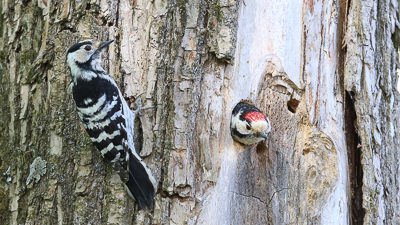
Like the Great Spotted, the Lesser Spotted Woodpecker is black and white in colour but has slightly different markings. It can be distinguished by its white ladder marking against its black back, and males have a distinctive red crown cap.
Also like the Great Spotted, the Lesser Spotted drums. Its drum is quieter but it lasts longer than its larger cousin.
Lesser Spotted Woodpeckers eat a diet rich in insects which it catches by creeping along high up branches on trees. It will also hunt for wood-boring larvae by chipping away at rotten wood.
Why do Woodpeckers Drum?
There are two main reasons Woodpeckers drum.
The main one is communication. Drumming is mostly done by males who hold territories. By drumming, he is telling other males to keep away and he is advertising himself to female Woodpeckers by telling them he holds a territory, meaning he has the resources to be able to support young.
Green Woodpeckers do drum for this reason, but they mainly use vocalisations to communicate.
The second reason Woodpeckers drum is to create a cavity in a tree in which they can build a nest. This can take as long as six weeks to complete, but serves to provide protection against the weather and predators for young chicks.
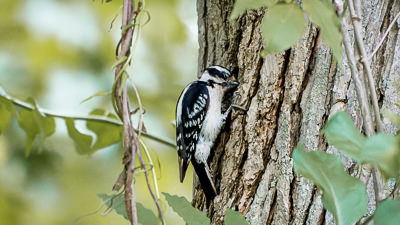
You would think that all that drumming would give the Woodpecker a concussion, or at least an almighty headache, but this is not the case.
Woodpeckers have special adaptations that enable them to drum regularly without causing any damage. These include a specially shaped hinge between the front of the skull and the beak, which is combined with a shock-absorbing muscle that protects the brain from the impact and vibration.
Mating and Breeding Behaviour
Great Spotted Woodpeckers produce a brood of four to six eggs in mid-April and incubation is between 10 and 16 days, with both males and females taking their turn. The young fledge around three to four weeks after hatching.
Green Woodpeckers have a longer breeding season than the Great Spotted, which can last between April and August. They too excavate nesting cavities in trees and the female lays between five and seven eggs. Incubation takes between 17 and 19 days, with both sexes playing their role. Fledging takes around 19 days.
Lesser Spotted Woodpeckers are the earliest breeders of the three species, with the female laying eggs sometimes as early as February. They lay four to six eggs which hatch after around 14 days. The chicks take around three weeks to fledge.
Attracting Woodpeckers to Your Garden
Unless you’re very lucky indeed, you’re unlikely to attract a Lesser Spotted Woodpecker to your garden simply because they are so rare. If you live in Scotland, your chances are even less I’m afraid, as there are none of these lovely little birds living up there. That’s not to say an English bird couldn’t be blown off course, but the chances of it are exceedingly unlikely.
Great Spotted Woodpeckers are, by contrast, a relatively common site in UK gardens and you can increase your chances of attracting them by with a few easy steps.
The first is to ensure you have hanging feeders as this replicates feeding in a tree, so feels natural for them.
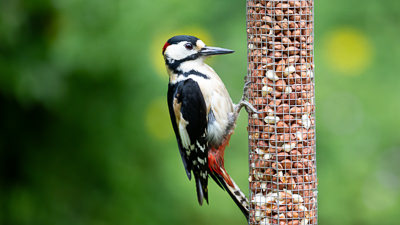
Woodpeckers are also attracted by native fauna, including oak, pine, beech, and elderberries because these tend to play host to the insects they like to eat, so planting some of these will, in time, help attract them.
Installing birdboxes specifically for Woodpeckers will encourage them to nest, particularly if they are situated in quiet, sheltered areas. Also, consider strategically placing hollow logs or tall wooden pots in your garden to give them a place to drum.
Even consider distributing nesting materials around your garden, such as wood chips, dried grass and feathers, as they will use all of these to build their nests.
What Food to Put Out for Woodpeckers
But of course, the best way to attract Woodpeckers to your garden is with food.
The great news is there are loads of different foods you can put out to attract them. From high quality, highly nutritious blends like our No Mess, No Grow Wild Bird Food and our Premium Wild Bird Food, to Suet Pellets, Dried Mealworms and Calciworms, to Sunflower Hearts, Peanuts and Selected Fat Balls; Woodpeckers will take them all.

And as Green Woodpeckers are insectivore ground feeders, scattering Dried Mealworms or Dried Calciworms on the ground is one of the best ways to try to attract them.
Finally, be patient. By doing some of all of these things doesn’t mean you’re guaranteed to see Woodpeckers straight away. But doing them consistently over time, there is every chance you will.
To find out more about which of our blends and single-ingredient foods are suitable for Woodpeckers, click here.
Or, if you have any other questions and Woodpeckers or feeding any other species of wild bird, get in touch via our social media channels or by filling in the contact` form on the website.
Our recent posts giving advice and guidance on wild birds
Starlings and one of nature’s finest spectacles
Reading Time: 8 minutes Despite being one of the most well-known garden birds in the UK, the Starling is actually one of the species we need to be the most concerned about? They are considered to be one of the fastest declining birds in the UK and have been cropping up on the UK Red List of Conservation Concern for more than 20 years now. In this article we take a look at that mesmerising phenomena that is murmuration, as well as their wider behaviour.
A Guide to British Wagtails
Reading Time: 9 minutes Wagtails are delightful little birds and are so called because they do just that – wag their tails frantically as they go about their business. In Great Britain, we have three native species – the Pied Wagtail, the Grey Wagtail, and the Yellow Wagtail, which is a summer migrant. In this blog, we take a look at each of them, to find out more about these charming and animated characters.
Drum Roll for the Woodpecker, One of the UK’s Best Loved Birds
Reading Time: 10 minutes One of the most intriguing and evocative sounds in British woodlands is the Woodpecker tapping on tree trunks. But is the UK home to any other varieties of Woodpecker and if so, do they drum? In this blog, we take a closer look at one of Britain’s best loved and most iconic birds and unveil the secrets of their unique behaviour.



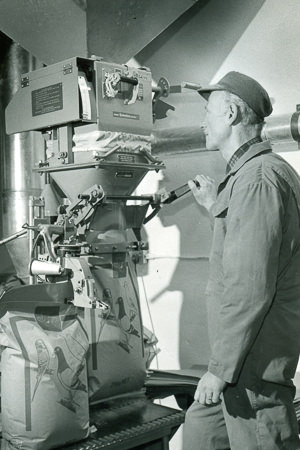





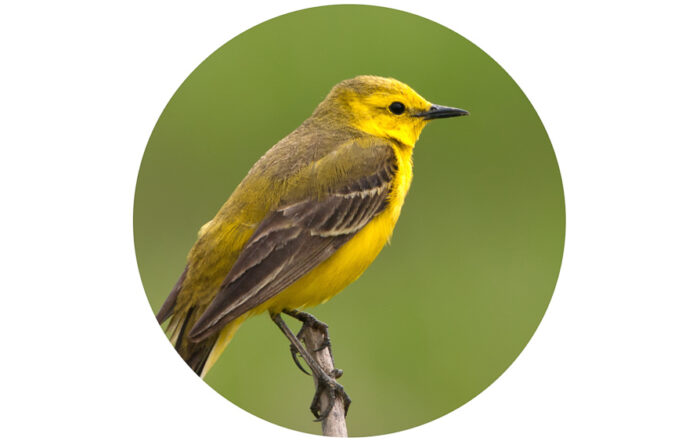
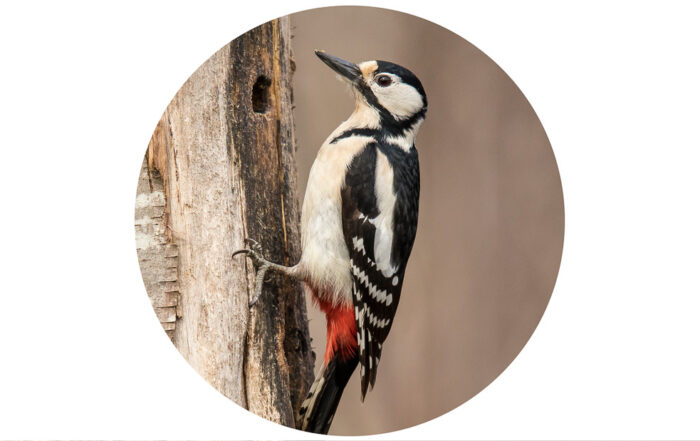
Leave A Comment